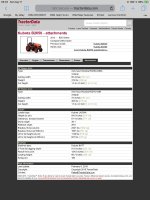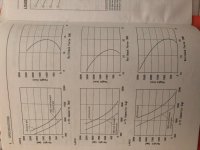Gem99ultra
Veteran Member
It's embarrassing to be so ignorant regarding terms that are apparently everyday conversation among so many knowledgeable tractor owners/operators. But, I'd rather be embarrassed than to remain ignorant. So, here's my two questions:
a) What does the term "bucket breakout force" means please.
b) I'm also trying to understand the amount of weight the FEL on a B2650 will handle, assuming I've added plenty of counterweight. That info never seems to be published. Is there a rule of thumb, or just how can I predetermine, short of damaging the tractor?
Many thanks for the education.
a) What does the term "bucket breakout force" means please.
b) I'm also trying to understand the amount of weight the FEL on a B2650 will handle, assuming I've added plenty of counterweight. That info never seems to be published. Is there a rule of thumb, or just how can I predetermine, short of damaging the tractor?
Many thanks for the education.

